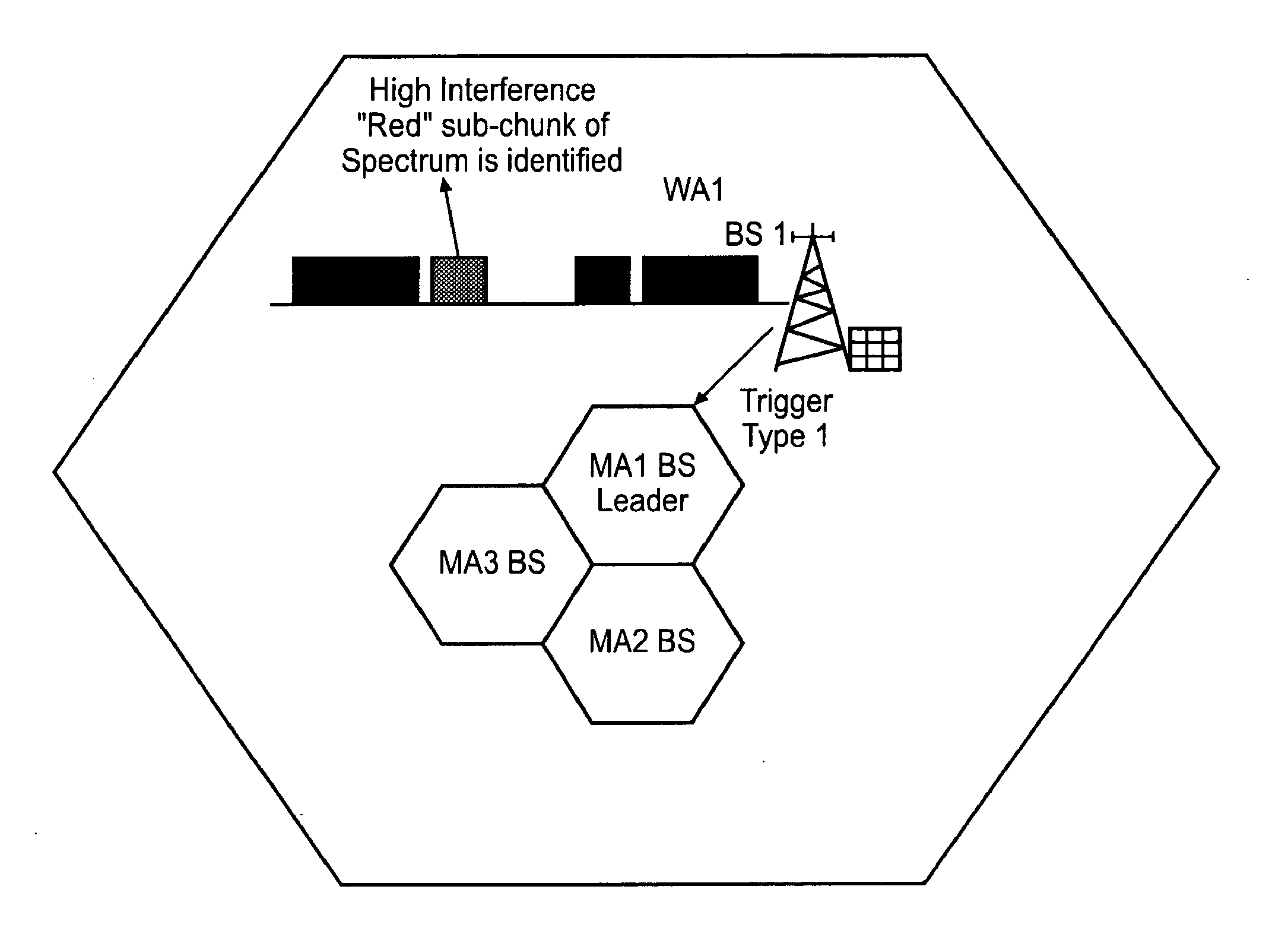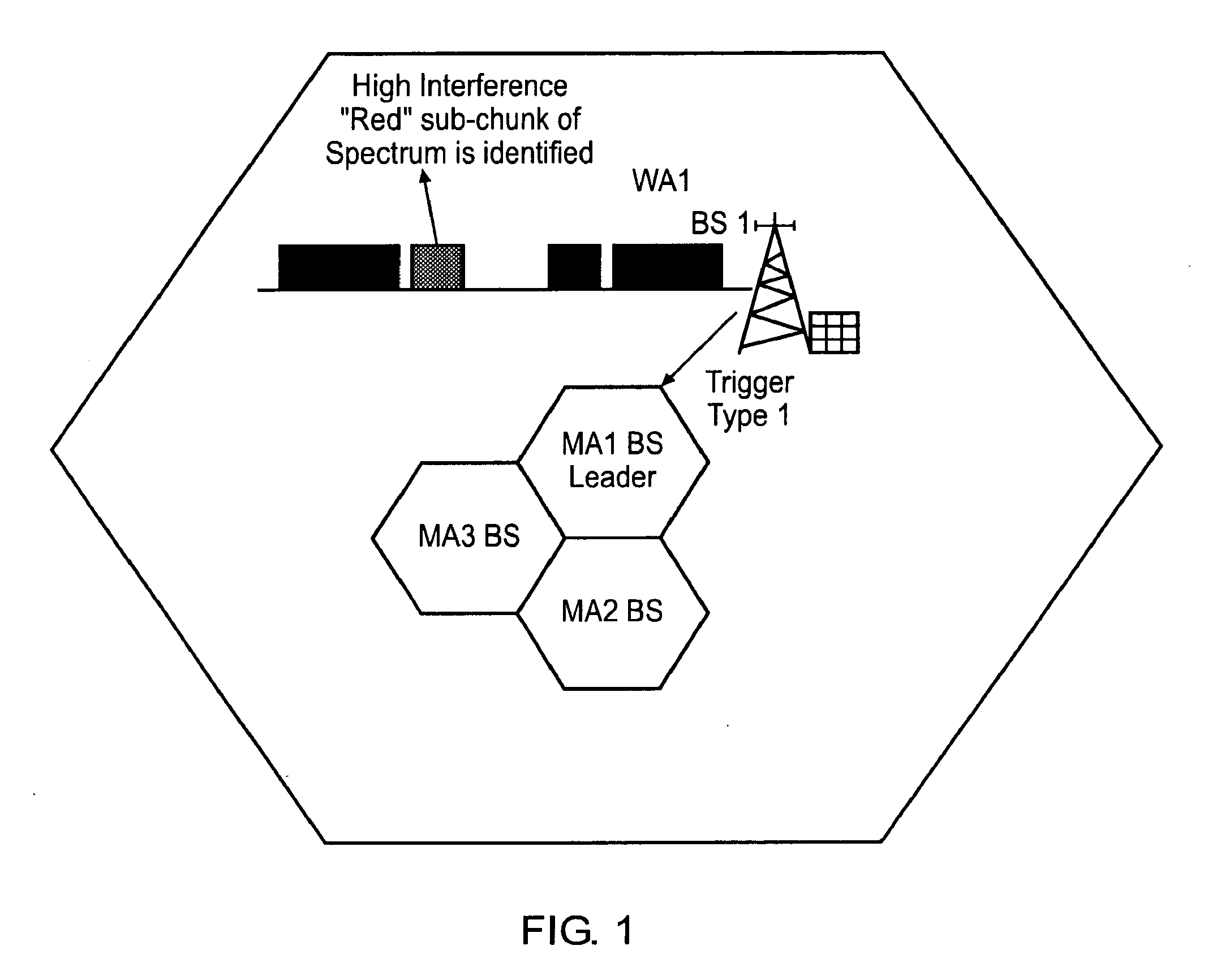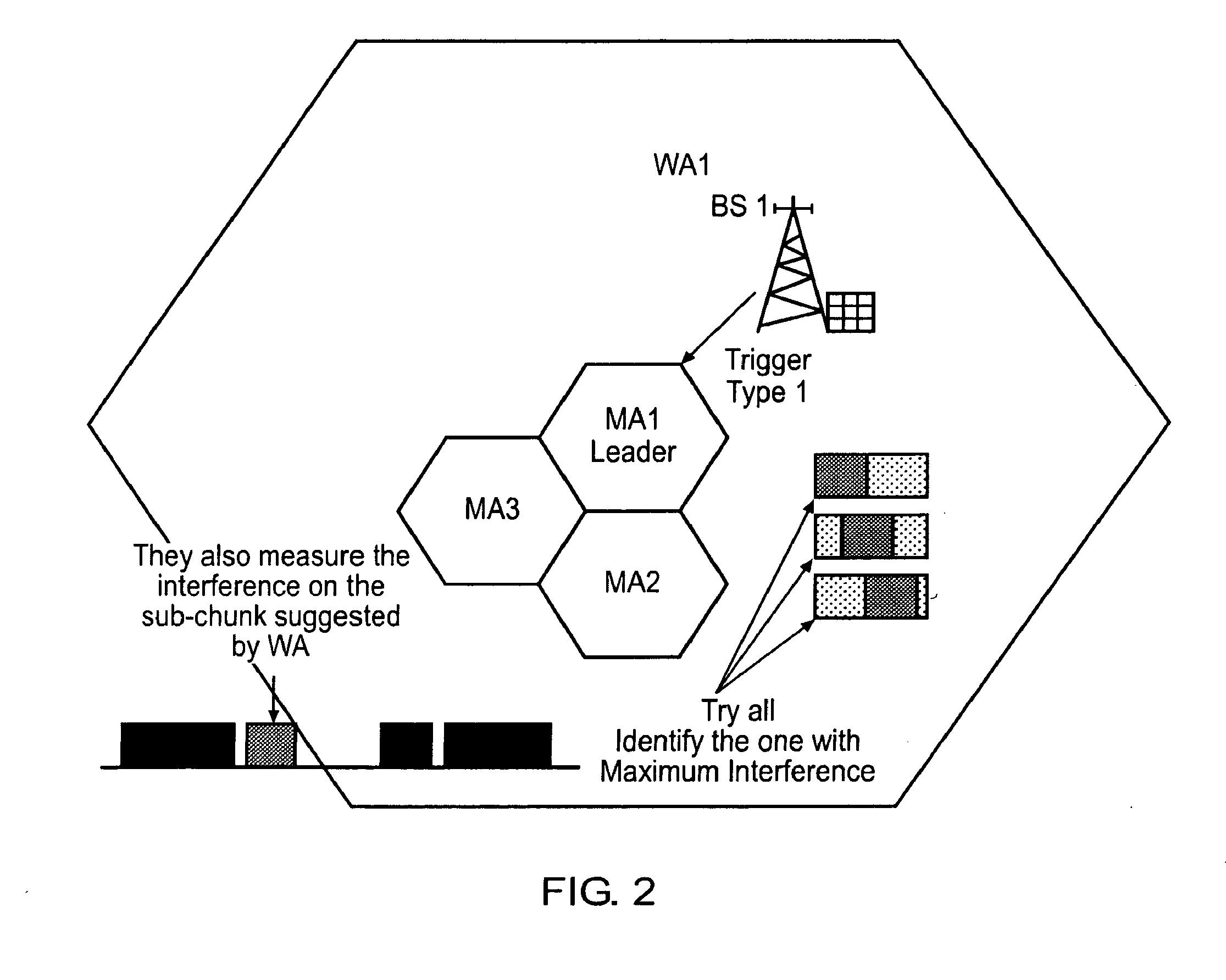Communications Systems
a technology of communication system and spectrum, applied in the field of control of spectrum use in a wireless communication system, can solve the problems of most of the radio spectrum resources remaining underutilized or unused most of the time, and achieve the effects of improving qos and sir ratio, improving spectral efficiency, and improving overall network coverage, throughput and revenue for the borrowing party
- Summary
- Abstract
- Description
- Claims
- Application Information
AI Technical Summary
Benefits of technology
Problems solved by technology
Method used
Image
Examples
Embodiment Construction
[0073]Embodiments of the invention relate to methods for short-term spectrum exchange in wireless networks.
[0074]FIGS. 1 to 6 relate to the exchange of spectrum between a base station BS1 of a cell WA1 of a wide-area network (WAN) and three cells MA1-3 of a metropolitan-area network (MAN), grouped as a cluster located within the WA cell WA1. The cell MA1 acts as a leader of the cluster of MA cells MA1-3.
[0075]The following steps describe a short-term spectrum exchange process.
[0076]In step 1, the spectrum is divided into sub-chunks. On a short-term basis, the base station BS1 of cell WA1 measures the interference in different sub-chunks of spectrum, as shown in the spectrum diagrams to the right-hand side of FIG. 2, in which the sub-chunk being analysed is shown in dark. Sub-chunks are preferably completely separate, but may partially overlap, as shown. If the interference is above a specific threshold, the base station BS1 identifies the specific sub-chunk of spectrum as ‘red’ or h...
PUM
 Login to View More
Login to View More Abstract
Description
Claims
Application Information
 Login to View More
Login to View More - R&D
- Intellectual Property
- Life Sciences
- Materials
- Tech Scout
- Unparalleled Data Quality
- Higher Quality Content
- 60% Fewer Hallucinations
Browse by: Latest US Patents, China's latest patents, Technical Efficacy Thesaurus, Application Domain, Technology Topic, Popular Technical Reports.
© 2025 PatSnap. All rights reserved.Legal|Privacy policy|Modern Slavery Act Transparency Statement|Sitemap|About US| Contact US: help@patsnap.com



